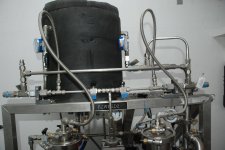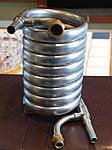NorCalHawaii
Member
Greetings all! I am waiting on a 5 lb rack mounted MK x to be shipped and am trying to figure out the best way to pre-chill the solvent. I want to get the 60# jacketed/coiled solvent tank from Xtractor Depot but i am unsure of which re circulation chiller to order to get -30 solvent. Has anyone had any experience with this application? Specifically i am unsure what size unit (7,15,20,30 liters) will keep the temps down efficiently. Does a bigger resi mean more stable temps and/or is pump volume a factor? I have been considering the Polyscience -40 15/l unit, the ColeParmer -40 15/l unit and a few others but am unsure if they fit the application. Any help would be appreciated, love to hear from anyone that knows....Thanks.





